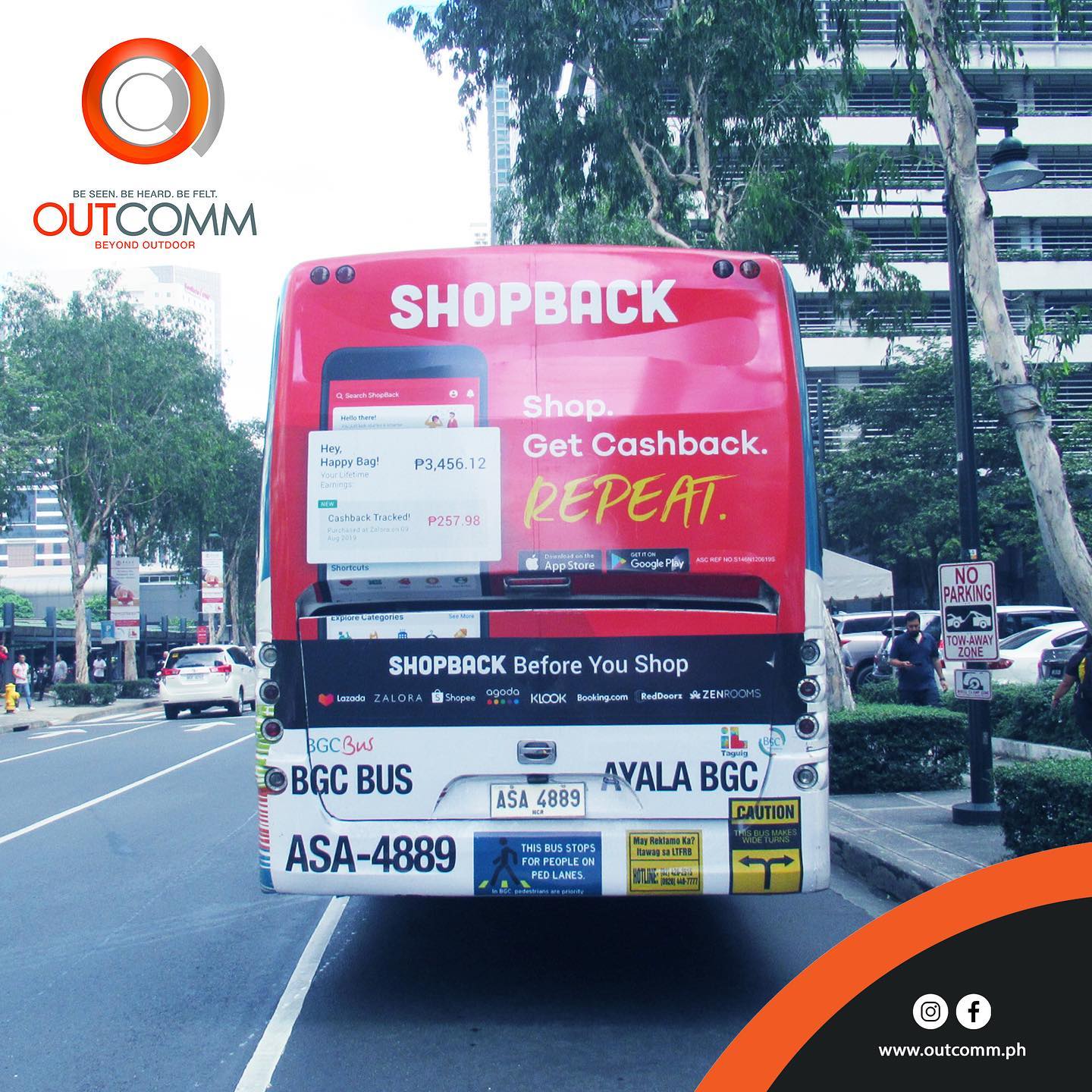Why Pick Transit Advertising Philippines for Your Brand
Why Pick Transit Advertising Philippines for Your Brand
Blog Article
Comprehending the Function of Transportation Advertising in Enhancing Brand Exposure and Consumer Involvement
Transportation advertising has become a pivotal element in the advertising and marketing landscape, supplying unique opportunities for brands to elevate their visibility and involve consumers successfully. With the capability to get to a captive and varied audience during their day-to-day commutes, these advertising and marketing methods are not just about visibility; they have to do with producing meaningful connections with prospective customers. As we explore the complex advantages and innovative strategies within transportation marketing, it ends up being important to take into consideration exactly how these aspects collectively affect customer assumption and behavior, increasing concerns concerning their lasting impact on brand name loyalty.
Definition of Transportation Advertising
Transportation advertising and marketing describes the practice of advertising items, services, or brand names via ads positioned around mass transit systems. This form of advertising and marketing includes a variety of placements, consisting of posters on trains and buses, digital screens at transit stations, and covers on the outside of vehicles. It intends to get to a varied audience, maximizing the high foot website traffic related to public transit.
Transportation advertising is strategically positioned to catch the interest of commuters, who commonly invest substantial time waiting or traveling. By incorporating advertisements right into the daily regimens of individuals, brands can produce a long-term impression and foster brand name acknowledgment. The tool is specifically effective in city environments, where public transportation is a key mode of travel.
Additionally, transportation marketing can promote local targeting, permitting companies to get to certain demographics based on transportation paths and station areas. As metropolitan populaces grow and the usage of public transport boosts, this advertising approach has actually gained prestige as an essential element of integrated advertising and marketing techniques. The dynamic nature of transit advertising and marketing, combined with its ability to engage customers in a captive environment, emphasizes its significance in contemporary advertising and marketing methods.
Benefits of Transit Advertising
The performance of transportation marketing lies in its ability to supply a multitude of advantages to brand names seeking to improve presence and involvement. One of the key advantages is the substantial reach it supplies; transit advertisements can effectively target varied demographics across metropolitan areas, reaching both pedestrians and commuters alike. This broad direct exposure significantly enhances brand name understanding.
One more advantage is the high frequency of impacts. As transit vehicles follow established routes and quit at multiple areas, they produce repetitive exposure that reinforces brand name messages. This frequency cultivates knowledge, which is important in customer decision-making.
Transit advertising is additionally cost-efficient contrasted to other media systems. Given its expansive reach and possibility for high impacts, brands usually experience a lower cost per thousand impacts (CPM), optimizing their advertising budget.
Moreover, transit ads can create a sense of area connection. By straightening with regional transit systems, brand names can resonate with regional target markets and foster a sense of local satisfaction. This localized technique improves brand name loyalty and engagement, making transit advertising an engaging option for businesses intending to solidify their Continued presence out there.

Effective Methods for Transportation Projects
To optimize the impact of transit projects, brands must take advantage of tactical preparation and execution customized Find Out More to their target audience. Initially, determining the group attributes of the audience making use of public transportation is important. This allows brand names to create personalized messaging that resonates with potential customers.
Following, picking the ideal transportation mediums is important. Whether making use of bus covers, metro posters, or digital displays, each tool has special benefits that can boost visibility. For example, lively visuals on bus wraps can stand out, while electronic ads can be upgraded frequently to show prompt promos.
Additionally, incorporating a natural branding technique throughout transportation platforms ensures consistency and strengthens the brand name's identification. Utilizing memorable taglines and eye-catching designs will enhance brand name recall amongst commuters.
By using these techniques, brand names can effectively harness the capacity of transportation advertising and marketing, fostering higher awareness and link with their target audience. Ultimately, a well-executed transportation campaign can drive substantial development in brand name exposure and consumer interaction.

Gauging Influence and Interaction
In reviewing the performance of transportation marketing campaign, accurate measurement of influence and engagement is vital for brand names seeking to maximize their advertising techniques. Metrics such as reach, regularity, and perceptions offer check it out fundamental information to evaluate visibility. Examining these variables helps identify the amount of possible customers are revealed to the advertisements throughout their day-to-day commutes.
Involvement can be more evaluated via customer interactions, such as internet site traffic, social media states, and direct reactions to calls-to-action included in the advertisements. Utilizing tools like QR codes or distinct Links can help with tracking of consumer behavior straight connected to transit projects. Studies and responses systems additionally serve as useful techniques to collect qualitative data on consumer assumptions and recall of the advertisement.
Moreover, advanced analytics and attribution models can correlate transit exposure with succeeding buying actions, using understandings into the roi. By employing an extensive technique that combines qualitative and measurable actions, brands can develop a nuanced understanding of their transit marketing influence. Eventually, this data-driven technique allows brand names to improve their projects, ensuring they reverberate properly with target market and boost overall brand presence.
Instance Research Studies of Successful Campaigns
Effective transit marketing projects offer as compelling examples of exactly how efficient strategies can raise brand name visibility and interaction. Transit Advertising Philippines. One notable situation is the "I Love New york city" campaign, which transformed the city's photo and brought in millions of vacationers. By using metro advertisements, billboards, and bus wraps, the campaign produced a strong, cohesive brand name identification, causing a significant uptick in tourist and neighborhood organization patronage
Another excellent project is Coca-Cola's "Share a Coke" effort, which leveraged transportation advertising to individualize the brand name experience. By including preferred names on promotional materials throughout numerous transportation platforms, Coca-Cola promoted a deeper psychological link with consumers, urging them to share their experiences on social networks.
Additionally, the "Got Milk?" project successfully made use of public transportation advertisements to reach a wide audience, enhancing the message of the relevance of milk in a well balanced diet. The campaign saw a measurable rise in milk consumption in target demographics.
These situation research studies illustrate that when carried out attentively, transportation advertising and marketing can dramatically boost brand presence, foster consumer interaction, and drive quantifiable outcomes, demonstrating its important function in modern-day advertising and marketing strategies. - Transit Advertising Philippines
Final Thought
In final thought, transportation advertising offers as a crucial device for boosting brand presence and cultivating customer involvement. Inevitably, the capacity to gauge engagement and analyze effective case research studies emphasizes the effectiveness of transportation advertising and marketing in driving brand commitment and customer communications.
Transportation marketing has actually emerged as a crucial element in the advertising landscape, offering unique chances for brands to raise their visibility and engage consumers properly.Furthermore, transportation advertising can help with local targeting, allowing businesses to get to specific demographics based on transit courses and terminal places.In assessing the efficiency of transportation advertising and marketing campaigns, exact dimension of effect and engagement is essential for brands seeking to optimize their advertising techniques.Successful transit advertising and marketing projects serve as compelling examples of just how efficient strategies can elevate brand visibility and involvement.In final thought, transit marketing offers as an important tool for enhancing brand visibility and promoting customer involvement.
Report this page